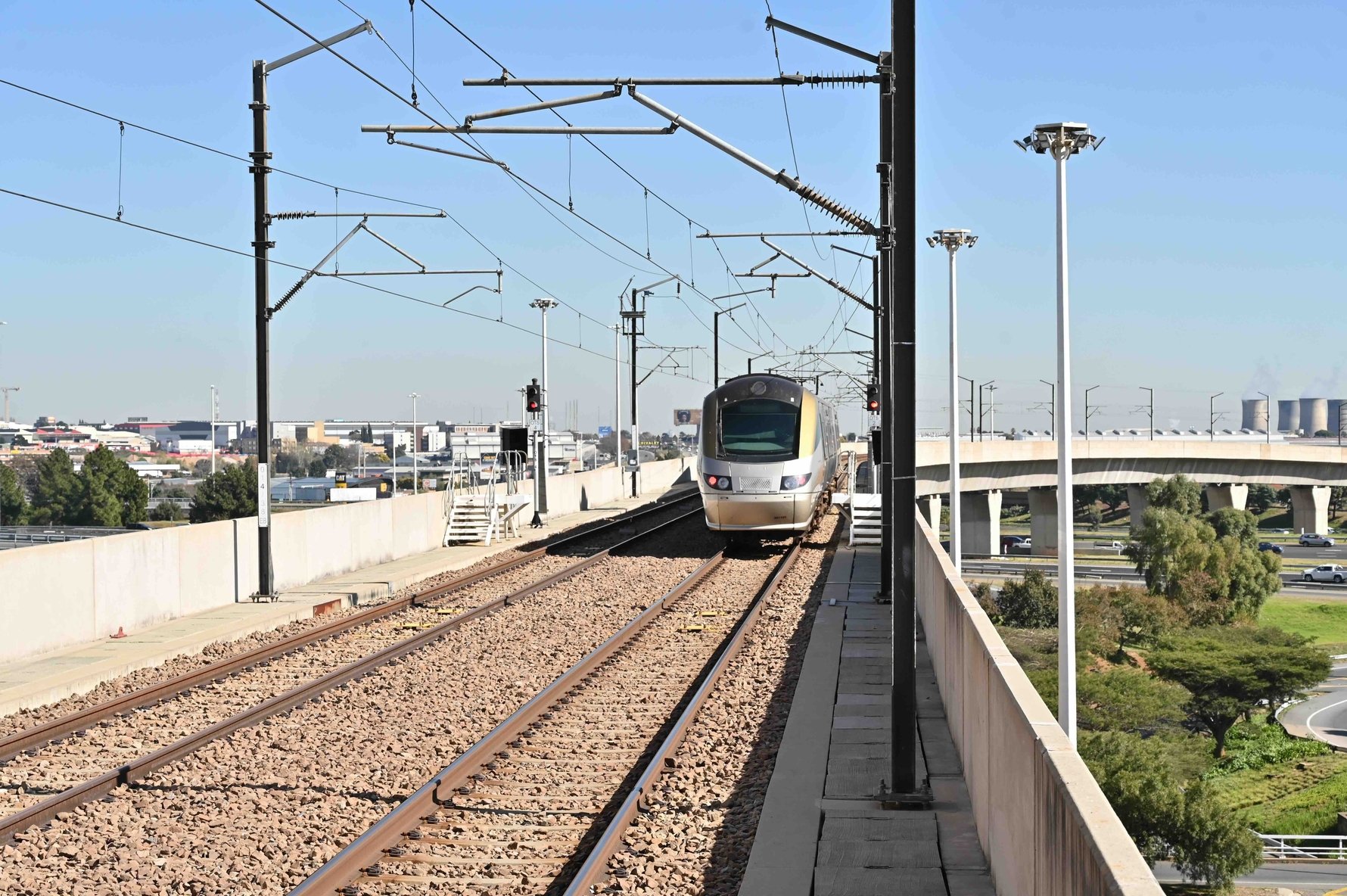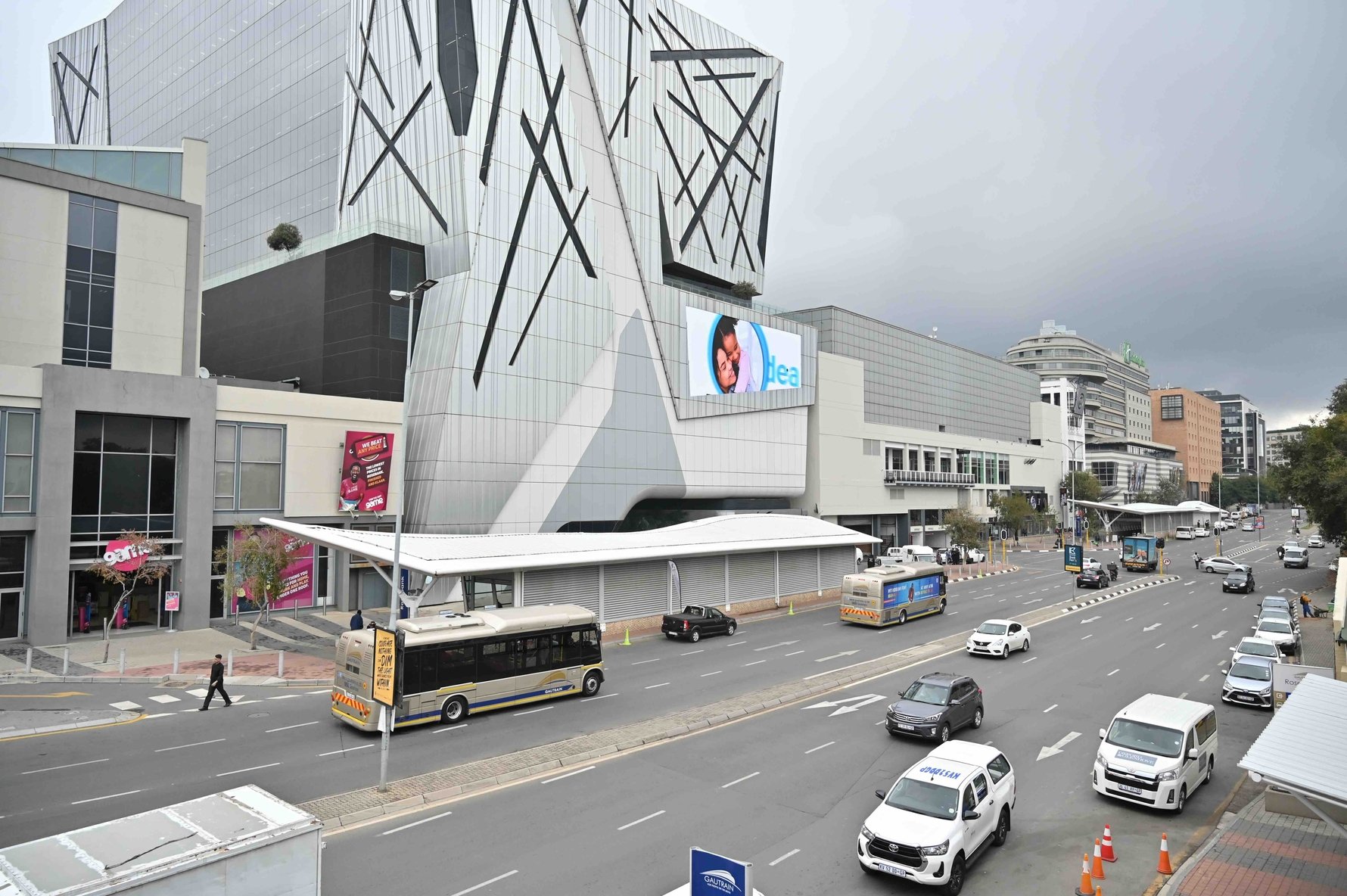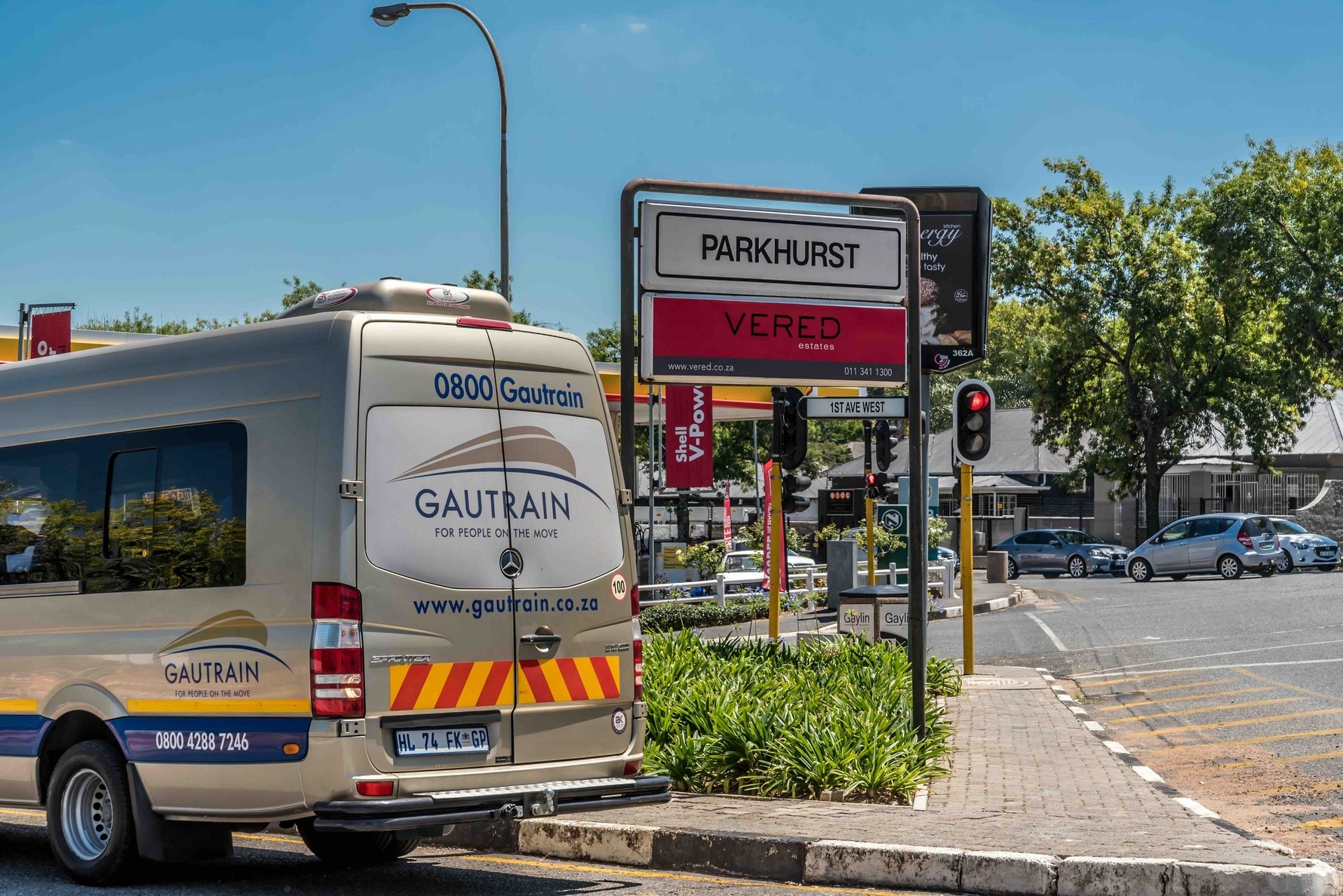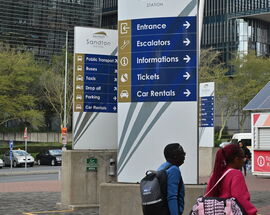Journalists, business leaders, creatives, and company representatives gathered for the opening day of TEDxJohannesburg (Oct 24, 2025) at the Gordon Institute of Business Science (GIBS). This year’s event was one of just 18 official TED Countdown Anchor Events worldwide. The programme explored justice, innovation, and sustainability, but one moment stood out to us: a presentation by Viwe Mgedzi, Gautrain’s knowledge manager, on how travel must shift in an era shaped by climate change – and what that means for Gauteng’s flagship rail and bus system.

Mgedzi opened with a quiet invocation of sankofa – a symbol originating from the Akan people of Ghana, representing the idea that we look back in order to move forward with wisdom. A short video followed, showing grainy clips from the Gautrain’s early days: the arrival of the first railcars in 2008, the breakthrough of the Sandton tunnel, travellers boarding at O.R. Tambo International Airport, and the wave of national pride ahead of the 2010 World Cup.
Watching this footage was unexpectedly moving. For this writer, the Gautrain is a weekly link between home in Midrand and Johannesburg In Your Pocket’s Rosebank offices. So much labour, engineering, risk, and vision lie beneath this system we now board regularly, without a second thought. The discussion that followed was a call to rethink how movement, progress, and climate responsibility intersect.
Partnership that moves us

Photo: Johannesburg In Your Pocket.
Established in 2006, the Gautrain offers a glimpse of a different approach – a public transport system designed not just to move people efficiently but to reduce emissions and make cars less essential. Behind this modern network lies a careful web of partnerships that make it work.
At its core is a clear division of roles: the Gautrain Management Agency (GMA) sets the vision, rules, and funding on behalf of the Gauteng government, while Bombela, the private operator, runs the trains day to day. Around them is a broader ecosystem: local municipalities, taxi associations providing first- and last-mile connections, transport regulators like PRASA and SANRAL, and the commuters themselves, whose choices shape the system’s success.
"It's about creating human connections that make a transport system reliable, inclusive, and sustainable." – Gautrain knowledge manager, Viwe Mgedzi
Mgedzi’s favourite example is the collaboration with the local taxi industry. In 2011, Gautrain partnered with taxi associations to create the now-ubiquitous Gautrain Midibuses. These buses are owned by taxi operators and largely staffed by their workers, with a remarkable mix of youth and women drivers. After Covid-19, these Midibuses were the fastest part of the network to recover, showing that when local communities are genuinely integrated into a transport system, resilience follows naturally.
"Building partnerships isn’t just about contracts and penalties. It’s about creating human connections that make a transport system reliable, inclusive, and sustainable," Mgedzi says. Or, as CEO of Microsoft Satya Nadella puts it: "Build partnerships before you need them."
The climate dilemma

The 21st century has been defined by unprecedented mobility – the movement of people, goods, capital, and ideas. Yet this freedom now collides with planetary limits. In South Africa, the transport sector accounts for about 13% of the country’s greenhouse-gas emissions (according to a 2025 report by the Department of Transport), meaning the choices we make about how we move every day have a real environmental impact.
With temperatures rising and weather patterns becoming less predictable, the "age of travel" must evolve into an era of sustainable movement. Transport touches everything: equitable cities, energy security, food systems, gender, employment, and public health. When mobility fails, society falters. When it works, opportunities multiply. Mgedzi puts it simply: if mobility accounts for 25% of the global problem, it must also be 25% of the solution.
Why rail matters: Environmental and social impact

When it comes to sustainable mobility on mass, rail stands out. The Gautrain is the first rapid-rail system in Africa to run electric trains at speeds of up to 160 km/h. It’s fast, efficient, and – importantly – far less carbon-intensive than private cars or minibus taxis.
Since its 2010 launch, Gautrain has carried millions of passengers while cutting roughly 360,000 tonnes of CO2 – a tangible contribution to South Africa’s climate goals that also directly supports the country’s Nationally Determined Contributions under the Paris Agreement. For context, South Africa’s projected greenhouse-gas emissions for 2030 are 350 – 420 million tonnes of CO2. Even a single full train can remove up to 1,000 car trips from the highways, reducing congestion and pollution while making city travel safer and more predictable.
Historically, trains in South Africa weren’t always symbols of progress. Hugh Masekela’s Stimela still echoes the sorrow of coal trains crossing the landscape under apartheid. Today, electric trains like the Gautrain carry a different story: one of efficiency, sustainability, and possibility.
Mgedzi acknowledges her bias, but she’s clear: rail moves more people using less energy. As ridership grows, every trip taken on the train instead of a car compounds emissions savings. Shifting how we travel isn’t just a personal choice – it’s central to a city- and country-wide climate strategy.
South Africa’s transport challenge
South African cities bear the imprint of decades of unequal, apartheid-era planning: sprawling, fragmented, and often disconnected from where people live and work. Many commuters still travel long distances each day, relying on minibus taxis or outdated rail systems to reach jobs, schools, and services."Many South Africans don't choose public transport – they endure it." – Gautrain knowledge manager, Viwe Mgedzi
Those with cars enjoy freedom and flexibility, while others are trapped in unreliable, carbon-intensive transport. Private cars account for nearly 90% of transport emissions in South Africa, yet the poorest commuters spend the largest share of their income simply getting to work.
"Many South Africans don't choose public transport – they endure it," says Mgedzi. Long taxi queues, underserved dense communities, and the aspirational value attached to car ownership all highlight this reality. For many, owning a first car is a rite of passage, a badge of dignity that sometimes outweighs environmental concerns.
Affordability remains a critical barrier. Globally, the International Association of Public Transport (UITP) reports that commuters often rely on fare discounts to access public transport, a reminder that a just transition to sustainable mobility cannot leave anyone behind.
Beyond the environmental benefits, the Gautrain demonstrates how sustainable mobility can support social equity. Integrated feeder services like the Midibus network connect commuters to stations, while fare discounts for students and lower-income households make the system more accessible. These measures show that climate action and social inclusion can go hand in hand – a key principle for a just transition to low-carbon mobility.
In South Africa, climate action must be synonymous with justice. The transition to low-carbon mobility cannot create new exclusions. Projects like the Gautrain offer a glimpse of what is technologically and environmentally possible, but achieving a just transition requires linking green infrastructure with affordability, energy reform, and inclusive urban planning.
Gautrain’s role in urban renewal

The Gautrain was never meant to be "just a train." From the start, its founders imagined a system that would reshape how Gauteng moves – reducing congestion, regenerating neighbourhoods, and setting a new standard for public transport.
That vision is taking shape. Areas like Rosebank, Sandton, Hatfield, and Midrand have become hubs of transit-oriented development, with homes, shops, and offices clustered around stations so people can walk, bike, or take public transport instead of driving. Property values have risen, new businesses have arrived, and streets have become more walkable – all while lowering emissions and shortening commutes. Rosebank in 2025 looks markedly different from a decade ago, a visible sign of how smart transport infrastructure can attract investment and improve urban life.
Gautrain stations also double as civic hubs through government partnerships. On an excursion between Rosebank and Pretoria stations during TEDxJohannesburg, we saw tech-enabled Driver’s Licence Testing Centres (DLTCs) integrated into transit stations. These centres streamline licence renewals, applications, and traffic fine payments – reducing backlogs and cutting travel time for commuters. At the same time, they generate revenue for the Gautrain Management Agency and demonstrate how transport infrastructure can serve multiple civic purposes.
Preparing for a climate-changed world

If you use the Gautrain instead of a private car, you reduce your carbon footprint by 60%. It’s a simple, measurable contribution anyone can make. But accessibility is key. Gautrain has rolled out a set of affordability measures for commuters to access this public transport. These include:
– Parking for R1 for any commuter who rides the train (until March 2026). Note: You must tag out with the same card you used for the parking. See the full Ts&Cs.
– 50% discount for registered students. Register here.
– 50% fare reduction for households earning under R350,000/year. Find out more.
Plan your trip with our guide to the Gautrain bus routes.







Comments